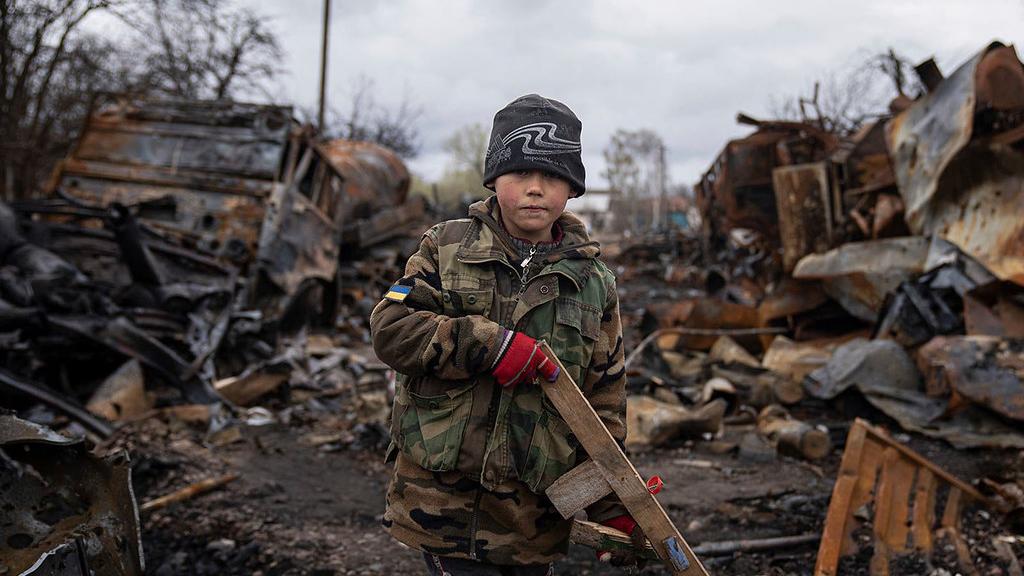Five wars in one: The battle for Ukraine

First published at New Left Review.
A classic analysis of the Second World War defines it as the outcome of five different types of conflict. First, war between the top imperialist powers—Germany, Japan, the us, Britain—competing for the position of world hegemon. For this, the challenger powers had both to assert control over a key region—for Japan, China and Southeast Asia; for Germany, the western Soviet Union and Caucasus (‘our India’)—and inflict a crippling blow on any imperialist powers who tried to block them: in Japan’s case, the us, which had no intention of permitting a contender in the Pacific; in Germany’s, France and Britain, who had no wish to see Europe dominated by Berlin.
Initially this inter-imperialist war was fought in two separate theatres, Northern Europe—first Poland, then Belgium, Holland, France, Denmark and Norway falling to the Wehrmacht in 1940; Barbarossa launched the following summer—and the Pacific, where FDR’s embargo of oil supplies and intransigence in negotiations determined Tokyo in 1941 to add Malaysia, Singapore and Indonesia to its conquests in China and French Indochina, and attempt to knock out the us fleet in Hawaii. The two theatres interlocked as the us came into the War and the UK, its debtor, having survived the Battle of Britain, shifted its forces to the Middle East to defend its oil fields in Iraq and Iran and the sprawling empire that stretched from Egypt and East Africa through India, Burma, Malaya and Singapore to Hong Kong and the Pacific. This inter-imperialist war was won decisively by the us, which crushed Germany and Japan and weakened Britain and France, to emerge as the world’s new hegemonic power.
The second type of warfare was the USSR’s self-defence against the German invasion, protecting the gains of 1917 from Nazi counter-revolution, rebuilding the Red Army and then—while the Western Allies were pinned down by surprisingly tough German defences in northern Italy and the Rhineland–Ardennes—sweeping west in 1944–45, as the Wehrmacht retreated and Nazi-collaborationist regimes crumbled in Bucharest, Sophia, Vilnius, Tallinn, Warsaw, Budapest and Vienna. The USSR emerged from the War as the second world power, with control over Eastern Europe. Although Moscow allowed Western troops into Vienna and Berlin, once the Truman Doctrine had been put into action, Stalin pushed through military-bureaucratic ‘revolutions from above’, crushing independent left forces and bequeathing ‘an ugly political legacy’ that would mark the post-war situation.
Distinct from this was a third type of war, fought by the Chinese people against Japanese imperialism, which would develop into a social revolution once Allied support for the Kuomintang was cut off. Fourth, and distinct again, were the wars of national liberation waged by anti-colonial forces who refused to fight for their French, British, Dutch and American masters in Indochina, Burma, Malaya, Indonesia and the Philippines, joined by the Quit India movement; these struggles again turned towards social revolution in Indonesia and Indochina. Fifth, the armed-resistance movements of Nazi-occupied Europe, which in several cases—Yugoslavia, Albania, Greece—took on the character of national uprising, revolution or civil war, while parallel processes in France and Italy saw the emergence of mass communist parties. The entry of independent social forces from below into the maelstrom of the inter-imperialist conflict through these ‘just wars’ of national resistance and liberation would play a significant role in shaping the first thirty years of the post-war order.
Might this type of analytical perspective throw some light on the present war for Ukraine?
Download a PDF of the article by clicking the link below.
| Attachment | Size |
|---|---|
| Susan Watkins, Five Wars in One, NLR 137, September October 2022.pdf | 83.89 KB |